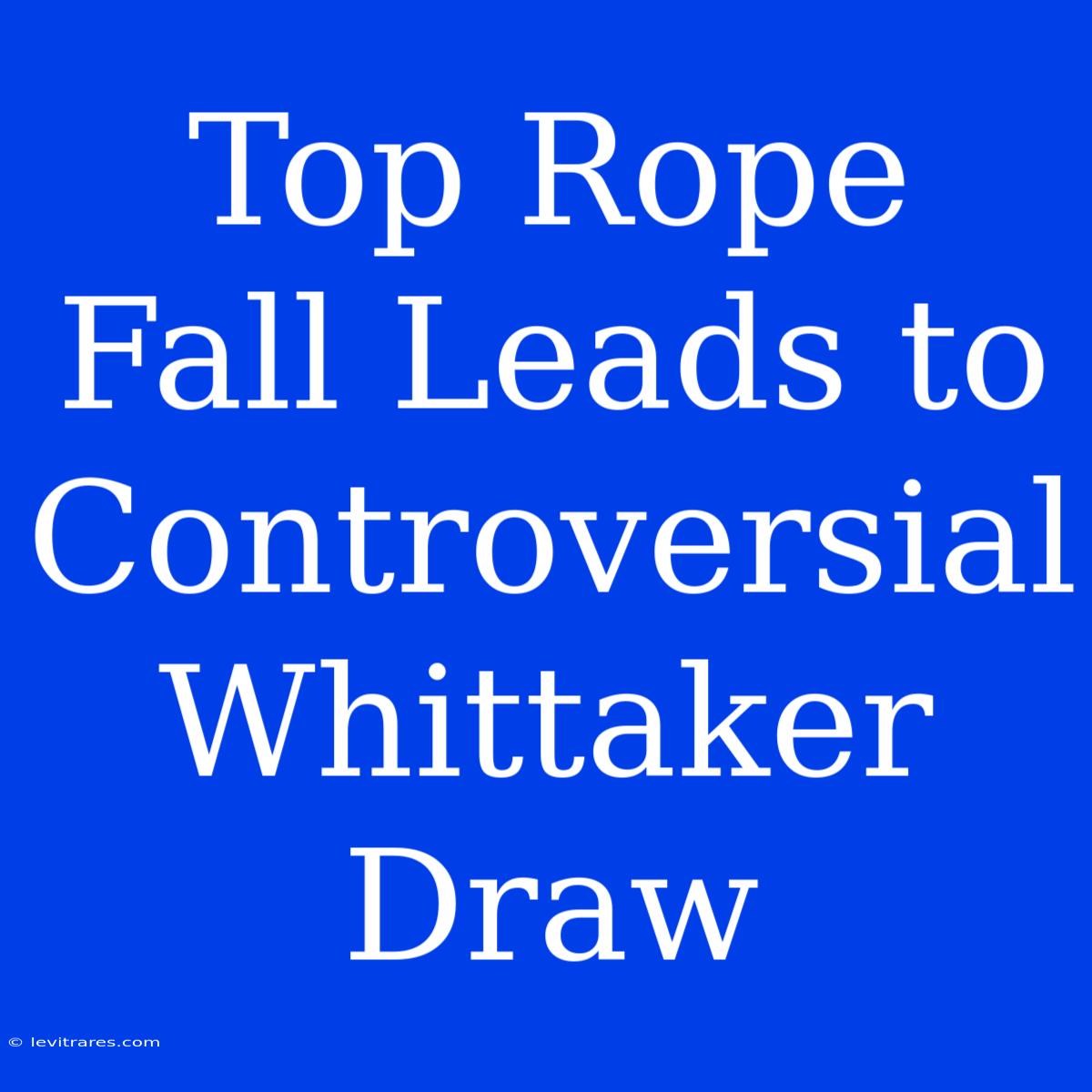Top Rope Fall Leads to Controversial Whittaker Draw: Unraveling the Debate
Is a top rope fall really a draw? This question sparked a heated debate after a recent climbing competition concluded in a controversial draw, with one climber suffering a fall while belayed on a top rope. The fall, while seemingly harmless, ignited a firestorm of discussion about the nature of climbing competitions and the definition of a draw.
Editor Note: The recent debate around the Whittaker Draw highlights the complex nature of climbing competitions and the need for clear guidelines in judging falls. This topic is important because it forces us to consider the safety and fairness of such competitions.
Analyzing the Controversy: We delved into the rules, the debate surrounding this incident, and the various perspectives on what constitutes a draw. Our research included analyzing climbing competition guidelines, interviewing climbers, and exploring the history of similar controversies. We aim to provide a comprehensive understanding of the Whittaker Draw debate and its potential implications for future competitions.
Key Takeaways of the Whittaker Draw:
| Aspect | Description |
|---|---|
| Safety Concerns | The fall, while a top rope, raised concerns about potential injury. |
| Fairness Debate | Climbers debated whether a fall, even in a top rope, should impact the outcome of a competition. |
| Rule Interpretation | The ambiguity in judging falls prompted a call for clearer guidelines. |
Top Rope Fall
The incident: The Whittaker Draw occurred during a competitive climb, where two climbers were vying for the top position. One climber, while belayed on a top rope, experienced a fall, causing some debate within the community.
Key Aspects of Top Rope Falls:
- Safety: Top ropes are designed for safety, minimizing the risk of injury in case of a fall. However, even top rope falls can have consequences.
- Competitive Impact: Falls, regardless of severity, often impact a climber's score, leading to questions of fairness when judging.
- Judgement Criteria: The criteria for evaluating a fall vary between competitions, often lacking clear guidelines for judges.
Discussion: The controversy surrounding the Whittaker Draw underscores the importance of clear rules and a consistent approach to judging falls. The debate highlights the need for guidelines that address not only the safety of the climbers but also the fairness of the competition.
Fairness and Judgement in Climbing Competitions
The Controversy: The debate surrounding the Whittaker Draw goes beyond a single incident. It delves into the fundamental question of how fairness should be assessed in climbing competitions.
Facets of Fairness:
- Subjective Judging: Climbing competitions rely heavily on subjective judgement, leading to potential inconsistencies.
- Performance Metrics: Quantifying performance is challenging, as climbers might excel in different aspects of climbing.
- Safety and Performance: Balancing safety considerations with performance is crucial, but achieving this balance remains a challenge.
Summary: The Whittaker Draw controversy highlights the complexities of judging climbing competitions. While safety is paramount, achieving a sense of fairness requires clear guidelines, a consistent judging process, and a commitment to transparency.
FAQ
Q: What are the common rules for falls in climbing competitions? A: Rules regarding falls vary. Some competitions allow for a certain number of falls before penalizing a climber, while others might award points for a clean ascent.
Q: How can a climber minimize the risk of a top rope fall? A: Climbers can minimize the risk of a top rope fall through proper technique, sufficient warm-up, and by ensuring the belayer is attentive and experienced.
Q: What are the potential consequences of a fall in a climbing competition? A: Depending on the competition and the severity of the fall, consequences can range from a score deduction to disqualification.
Q: What are the challenges of judging climbing competitions? **A: **Subjectivity, inconsistent performance metrics, and the need to balance safety and performance are some of the challenges faced by judges.
Tips for Climbing Competitions:
- Proper Preparation: Thorough preparation, including a warm-up and familiarity with the route, is essential.
- Technical Proficiency: Strong climbing technique minimizes the risk of falls.
- Communication: Clear communication between climbers and belayers is vital for safety.
- Respectful Competition: Maintaining sportsmanship and respecting judges' decisions is important for a positive competitive environment.
Summary of the Whittaker Draw: The Whittaker Draw debate serves as a reminder that climbing competitions require clear rules, consistent judging, and a commitment to fairness and safety. It prompts us to consider how we define a draw and how we balance performance with the well-being of the athletes.
Closing Message: The Whittaker Draw may be a single incident, but it sparks a larger discussion about the future of climbing competitions. Finding a balance between fairness, safety, and a clear set of rules is essential to ensure a vibrant and sustainable future for competitive climbing.

